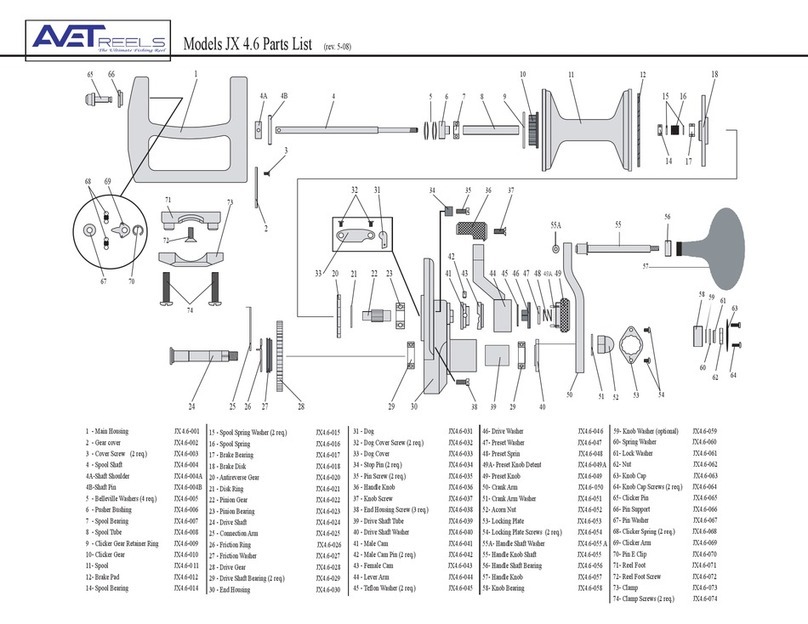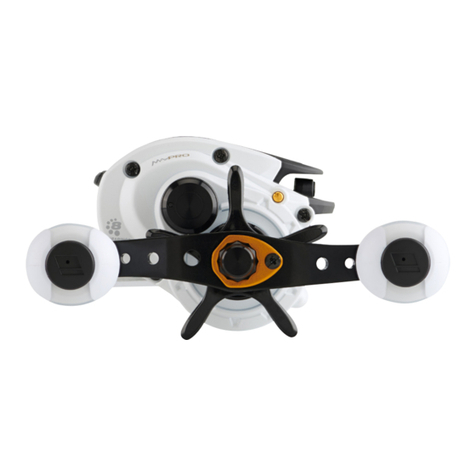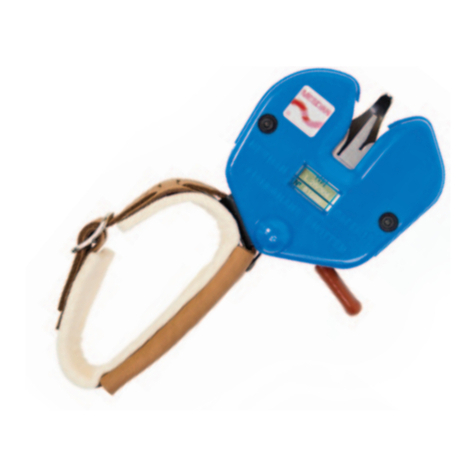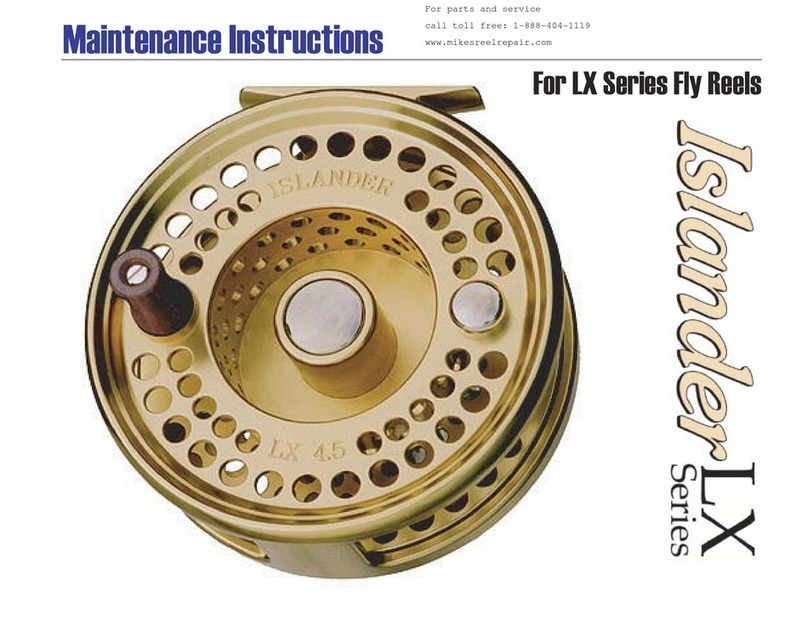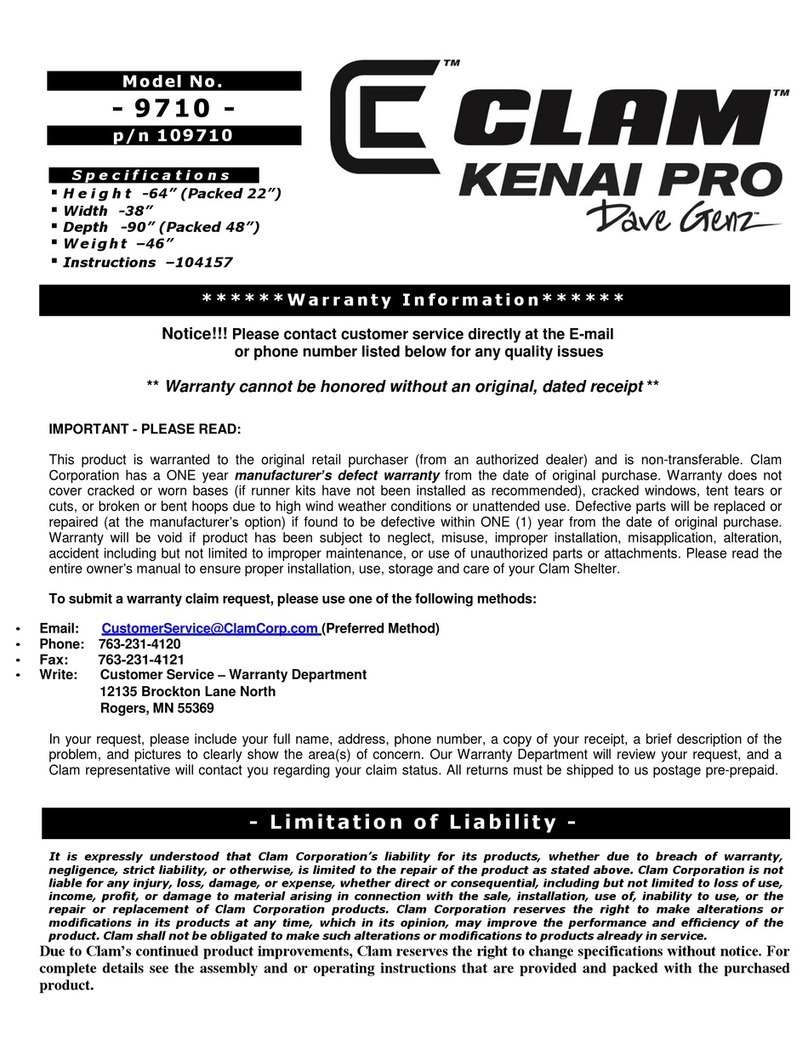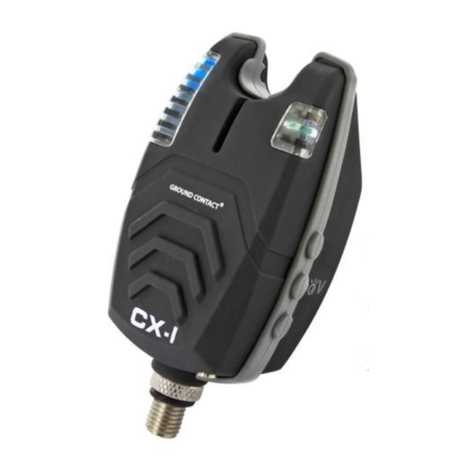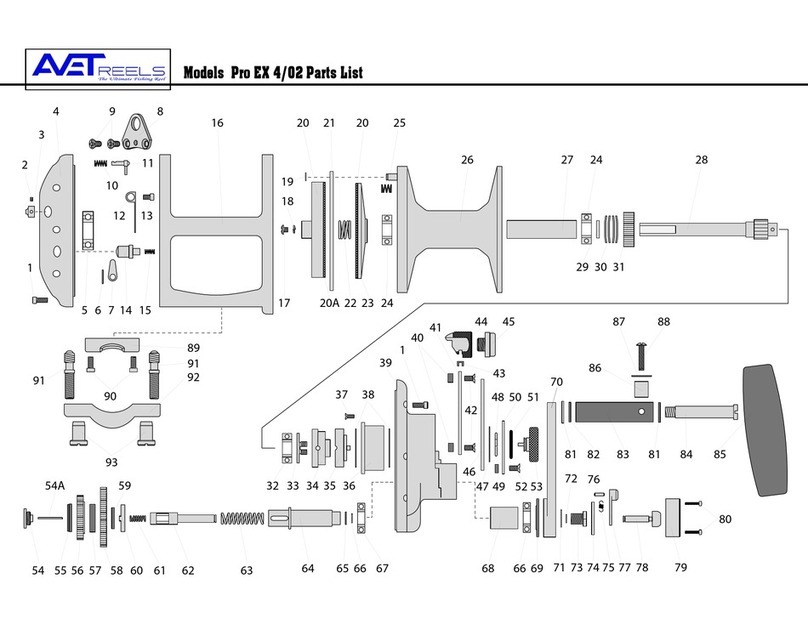Fish-Skull Articulated Shank User manual

Getting Started with the
Articulated Shank™
(Version 1)
Some ideas for tying different types of articulated flies

Getting Started with the Articulated Shank™
The Articulated Shank is a fly tying material intended to simplify the tying of articulated streamer
flies.
t will not be suitable for every possible type of articulated fly, but it can a very useful component
in many of the popular styles of articulated flies being tied today. These include single-hook and
two-hook articulated streamers, surface poppers and sliders, and also as an alternative to using
a Waddington shank or “sacrificed hook” method for tying free-swinging stinger hook style flies.
Summary:
● Easier-and-faster to tie articulated streamers by eliminating some of the traditional articulated
tying steps and materials.
● Articulation promotes a more realistic movement of the fly in the water.
● Fly Tiers can easily increase the overall length of their streamer patterns.
● Articulated flies significantly reduce the amount of “leverage” a hooked fish can place on the
fly enabling more and bigger fish to be landed.
● Available in 3 shank lengths (20mm, 35mm and 55mm) catering to a range of streamer
lengths (typically 3” / 7.5cm upward) and hook sizes (typically from #4 upwards to 3/0).
● For weighted streamers, the articulated shank is designed to fit and be combined with the
Fish-Skull™ in the Small-Medium, Medium and Large sizes or can be used with dumbbells.
● Made of the quality, high strength 316 stainless spring steel allowing it to be used in saltwater.
Applications
The following sections are intended to give you some ideas on how the Articulated Shank™
can be used in several different styles of articulated fly.
1. Single-hook articulated flies.
2. Streamers with free-swinging stinger hooks.
3. Articulated Poppers or Sliders
4. As a connector or “daisy chain” in two-hook articulated flies.
For each scenario we include some basic fly architecture, advantages and tying steps. We also
provide various design examples to give some ideas to get started on your own creations.
This should hopefully provide you with a start, but the exciting thing is that the possibilities for
innovative new articulated fly techniques, styles, lengths and hook size combinations is only
limited by your imagination…
Happy tying and fishing!
Martin Bawden

This is the simplest and most common form of articulated fly that is tied.
Traditionally, the fly tier must first use a pair of pliers to cut off the rear of a streamer hook at the
bend to remove the curve/barb/point section. This leaves the straight shank section of the hook to
which the fly tier then ties on a “loop” made of mono (or similar line). This loop is sometimes
combined with a few plastic beads to create a “connector” to attach the single rear hook. This
process is often time consuming and can be difficult for novice tiers.
The Articulated Shank™ simplifies this process as illustrated below:
1. Single-Hook Articulated Fly
+
“Loop” System
“Loop-and-Bead”
System
Key Benefits:
● No need to “sacrifice a hook” to create a straight shank. No need to go through the process of
cutting off the bend of a hook; it reduces cost, and there are no jagged hook edges to worry about.
● Simpler and faster to tie. The built-in loop of the Articulated Shank™ eliminates the need to build a
mono “loop” or “loop & bead” system.
● Provides a stronger and stiffer connection than a mono or dacron loop, therefore, eliminating any
connection weaknesses and common fouling problems when casting.
● No hook twisting. The joint ensures the hook always rides in-line and the fly tracks straight.
● More freedom of movement. The oversized loop allows the tail of the fly to move easily from side-
to-side (and also up-and-down in pauses between strips).
● Creates an “ nvisible connection.” The body materials can now be tied all the way back to the
loop/hook connection point. This eliminates any material gaps between the body and tail that are
sometimes visible with traditional methods.
Basic Tying Steps
1. Tie materials onto the hook to
create the tail of the fly.
2. Fit the finished tail hook on the
loop of the Articulated Shank (AS).
3. Put the AS in the vise and use
thread wraps to close off the loop.
4. Continue adding body materials
to the AS and finish the fly in the
normal way.
=

CM
NCHES
12 11 10 9 8 7 6 5 4 3 2 1 0
5 4 3 2 1 0
E amples of Single-Hook Articulated Flies
20mm Shank with hook down
35mm Shank with hook down
35mm Shank with hook up
55mm Shank with hook down
55mm Shank with hook up
Weighted fly example:
A 55mm Shank with a Fish-Skull
Weighted fly example:
A 35mm Shank with a Dumbbell
20mm Shank with hook up

The Articulated Shank™ offers tiers an alternative to using a Waddington shank, a cotter pin or the
“sacrificed hook” method when tying streamer flies that have a single free-swinging stinger hook.
For example: ntruder-style salmon/steelhead flies or Alaska-style articulated leech patterns.
For these types of flies, a single, short shank stinger hook (example: Gamakatsu Octopus hook) is
connected with a length of line to the end of a straight metal shank upon which the fly materials
(feathers, fur, hackle, etc..) are tied. The end result is typically a large streamer with a “free-
swinging” hook at the rear of the fly.
There are many types of line used to connect the hook to the shank and these include round mono,
flat mono, fly line backing (dacron) and other brands of fine cable such as “Fireline”, Spider Wire”
etc.... Some lines are very flexible, can be easily knotted and will swing more freely behind the fly.
Other lines may be much stiffer with less movement but are stronger and help to hold the hook in
position at the rear of the fly. Depending on which line you select, you can either knot or tie-in the
end of the line to the Articulated Shank™.
Basic Tying Steps using the Articulated Shank (AS)
1. Put the AS in the vise and use a tight layer of thread wraps to close off the loop.
2. Attach your line-and-stinger hook assembly to the AS using either the tie-in or knotting technique.
3. Add body materials to the AS and build your fly in the normal way.
2. Streamers with free-swinging stinger hooks.
Tie-in Method
You can tie-in stiffer, thicker line by using the same tying techniques as you use today. Simply tie-in
the line along the length of the shank, then double the line back-over and work backwards covering
with thread again.
The loop of the Articulated Shank™ is vertical compared to the Waddington Shank which lays
horizontal. Therefore, we suggest you thread one end of the line through one side of the loop and the
other end of the line through the opposite side so that they “criss-cross” and then tie-in the line on
either side of the shank. Alternatively, simply tie-in the two line ends on either side of the hook-shank.
Either way it forms a nice even connection.
Knot Method
f you are using a flexible line that can be easily knotted, then simply tie the end/s of the line to the
loop of the Articulated Shank™ using your favorite fishing knot such as an improved clinch knot.
f you want some added security, then just tie-in the long tag ends of your knot to the length of the
shank instead of trimming them off.

The of articulating surface poppers and sliders is a relatively new concept, but provides some really
compelling advantages over the established methods of tying these types of flies.
Conventional Methods
The common method for making most poppers today is to use a long shank “popper” or 'Bass Bug”
hook and combine with a popper (or slider) body to create the fly.
Articulated method.
Using the Articulated Shank you can easily articulate your popper or slider.
3. Articulated Poppers and Sliders.
Key Benefits:
● More movement from the articulated tail.
● Fewer fish are lost - a shorter articulated hook gives a hooked fish less “leverage” to throw the fly
than a typical long shank popper hook.
● Tied with the hook-up – the popper becomes “weedless”.
● Tied with the hook up – you get a greater % of hook-ups because the hook is in a better, more
open position when a fish strikes.
+=
+
=
=
Long-Shank Hook Popper Body Popper fly

The Articulated Shank™ can also be used as a 'daisy chain” connector between the front and rear
hooks in a two-hook articulated fly system.
The smallest size shank (20mm) can be used as an alternative to the “loop-and-beads” connector
system that is a common method used today as illustrated below.
Basic Tying Steps using the Articulated Shank (AS)
1. Begin by tying materials to the rear hook to create the tail of the fly.
2. Take the finished rear hook (tail) out of the vise and fit it on the loop of a 20mm Articulated
Shank (AS). Put the AS in the vise and use tight thread wraps to close off the loop. The rear hook
now has the AS firmly secured to it as a “connector.” You can then add some body materials to the
AS to build out the middle section of the fly. Take the AS out of the vise.
3. nsert the front hook into the vise.
4. Using a strong piece of mono (or similar line), tie the eye of the 20mm Articulated Shank (AS) to
the back of the front hook using a small loop. Use firm thread wraps to secure the mono along the
length of the hook shank and then double-back/wrap-back for added strength. Note: The eye of the
AS should almost touch the back of the front hook, but you should ensure that the mono loop
remains big enough to allow freedom of movement in the joint to give action to the fly.
5. Continue adding body materials to the front hook to build the body and head of the fly. Finish the
fly in the normal way.
You now have a two-hook articulated fly that has two articulation joints.
4. As a connector in two-hook articulated flies.
“Loop-and-Bead” System
Key Benefits:
● The built-in loop of the Articulated Shank™ replaces the need to build a mono “loop” or “loop &
bead” system between front and back hooks.
● Two distinct points of articulation promotes more freedom of movement. The AS positioned
between the front and rear hooks creates a front hook-to-AS joint and a rear hook-to-AS joint.
● Provides a stronger and stiffer connection reducing fouling problems when casting.
● Creates an “ nvisible connection.” The body materials can now be tied all the way back to the
loop/hook connection point. This eliminates any material gaps between the body and tail that are
sometimes visible with traditional methods.
Using the Articulated
Shank™ as a connector
Table of contents


